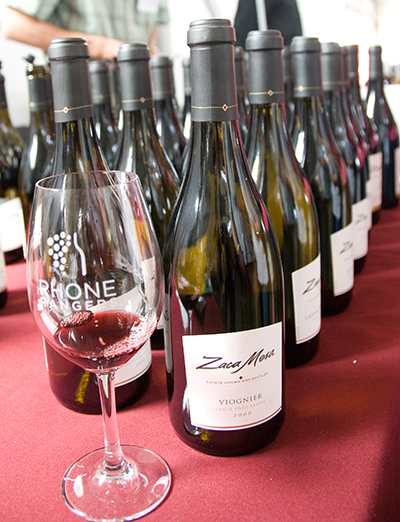By Brandon Thurber, VP Data Sales
Introduction
The RTD (Ready-to-Drink) cocktail market has experienced remarkable growth, capturing the attention of manufacturers, retailers, and consumers. This analysis delves into the latest trends, supported by National Retail Solutions(NRS) scan data, to provide a comprehensive overview of the current state and future potential of RTDs in the beverage alcohol (BevAl) industry. NRS has more than 27,000 independent retailers nationwide, of which more than 13,000 sell alcoholic beverages.
Growth Analysis
RTD cocktails, encompassing both wine and spirits, have seen significant year-over-year growth. Over the past year, the RTD market has expanded by 35%, driven by increasing consumer demand for convenience and variety. In the last 6 weeks alone, RTD sales surged by 12% compared to the previous 6 weeks, highlighting a continued upward trajectory.
RTD cocktails now constitute 9% of total spirits sales and 15% of total wine sales. This notable market penetration underscores the rising popularity of these convenient, typically flavor-forward options. Within the NRS network, RTDs make up 4% of all alcoholic beverage sales, up from 3% a year ago. A substantial portion of the growth (33%) in alcoholic beverage dollar sales compared to last year can be attributed to RTDs.
In-store, RTD products are becoming increasingly prevalent. Shelf space dedicated to RTDs has expanded by 10%, or 5 new items, over the past year, contributing to their rising sales figures. Other categories with growing sales, such as FMB (Flavored Malt Beverages) and Tequila, have shown an increase in overall shelf space. This shift seems to be coming at the expense of traditional beer and wine.
Drivers of Growth
Several factors are driving the growth of RTD cocktails. According to a Harris Poll, a significant number of consumers continue to seek flavorful beverage options. The poll highlights that taste remains a crucial factor influencing consumer choices across all beverage categories, including RTDs, FMBs, cider, and seltzer. RTDs, in particular, are praised for their rich and diverse flavor profiles, catering to a broad range of preferences.
Convenience is another significant driver of RTD popularity. RTDs offer unparalleled convenience, allowing consumers to enjoy a variety of cocktail options at social events without the need for additional ingredients or preparation. Interestingly, this convenience has not led to a consolidation of items in the basket. Typically, when a traditional spirit is purchased, nearly 70% of the time the purchase is contained within a single category. That number is 17% less when an RTD cocktail is purchased. Additionally, the overall basket amount is almost 60% higher when an RTD cocktail is purchased compared to a beer purchase, indicating a higher overall spend per transaction.
Challenges to Growth
Despite their popularity, RTDs face some challenges. Availability remains a key issue. In some states, these products are only available where spirits are sold, limiting their reach. However, legislative changes are beginning to expand access. For instance, recent changes in Pennsylvania’s legislation are set to allow RTDs to be sold in more locations, providing greater availability to consumers. These changes indicate a shift towards broader acceptance and distribution of RTDs, which could further drive their growth. This may mean a dampening for FMBs, as their growth is 14% lower YTD vs. LY in stores carrying both categories.
Impact on Other Categories
The rise of RTDs has implications for other beverage categories. With consumers opting for RTDs, there may be a decline in sales for mixers and other traditional cocktail components. Retailers may also adjust their product assortments, potentially reducing the variety of other beverages to make room for RTDs.
Moreover, as stores allocate more shelf space to RTDs, other categories may see reduced visibility and shelf presence. This shift could impact overall sales dynamics within the BevAl market.
Conclusion
The RTD cocktail market is poised for continued growth, driven by consumer demand for flavor and convenience. However, challenges such as availability and the impact on other categories must be navigated. By understanding these dynamics, stakeholders across the BevAl industry can better position themselves to capitalize on this evolving market trend.
Call to Action
For manufacturers and retailers, staying attuned to these trends and leveraging scan data insights will be crucial in making informed decisions that align with consumer preferences and market shifts.
Brandon Thurber, VP Data Sales
Brandon Thurber, VP Data Sales and Client Success joined National Retail Solutions (NRS Plus), from MSAi, where he spent several years helping CPG leaders in the Tobacco, Confectionery, Snack Food and Beverage Industries, leverage data and analytics to drive sales and profit growth. Brandon is immersed in the nuanced dynamics and the operational processes of the Convenience Channel including innovation launch strategy, trade program management, SKU optimization, and competitive analysis. Brandon brings a partnering, consultative approach to NRS, which is aligned with our vision and will enable us to continue to expand and evolve as we bring visibility to the retail “blind spot” of the Independents.






